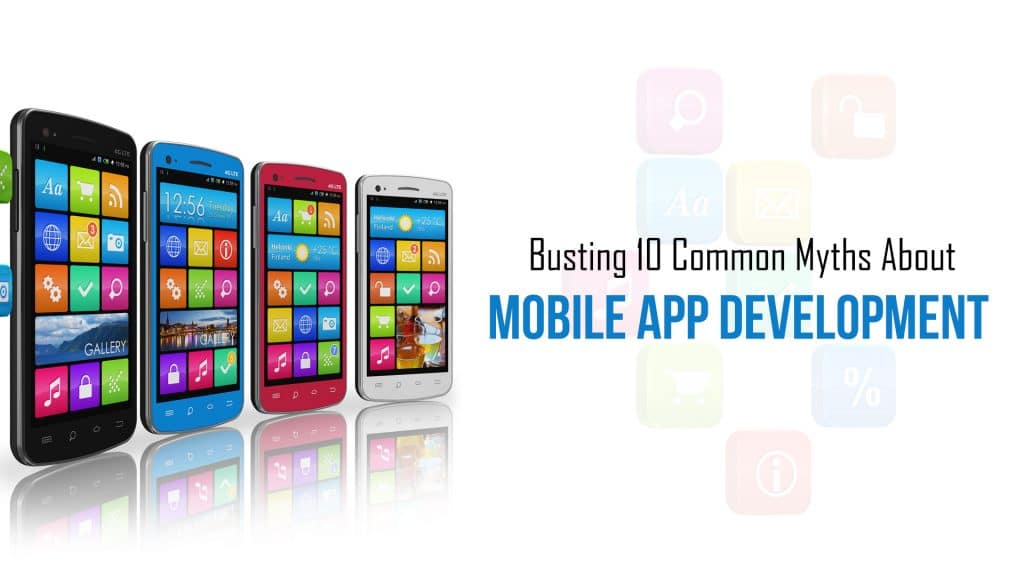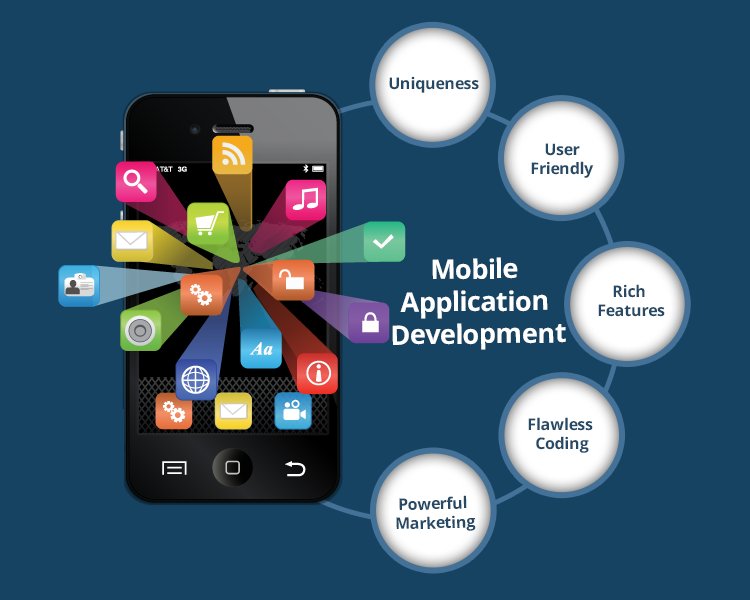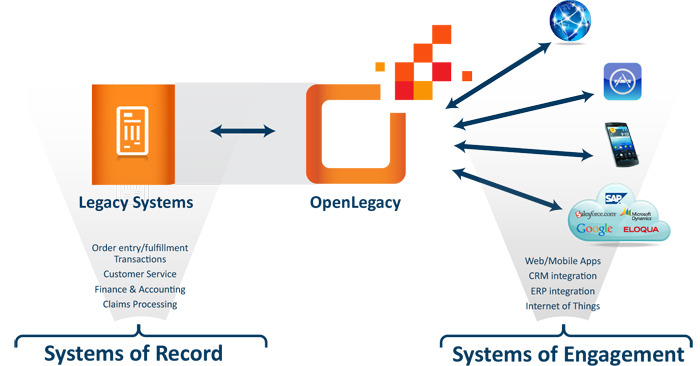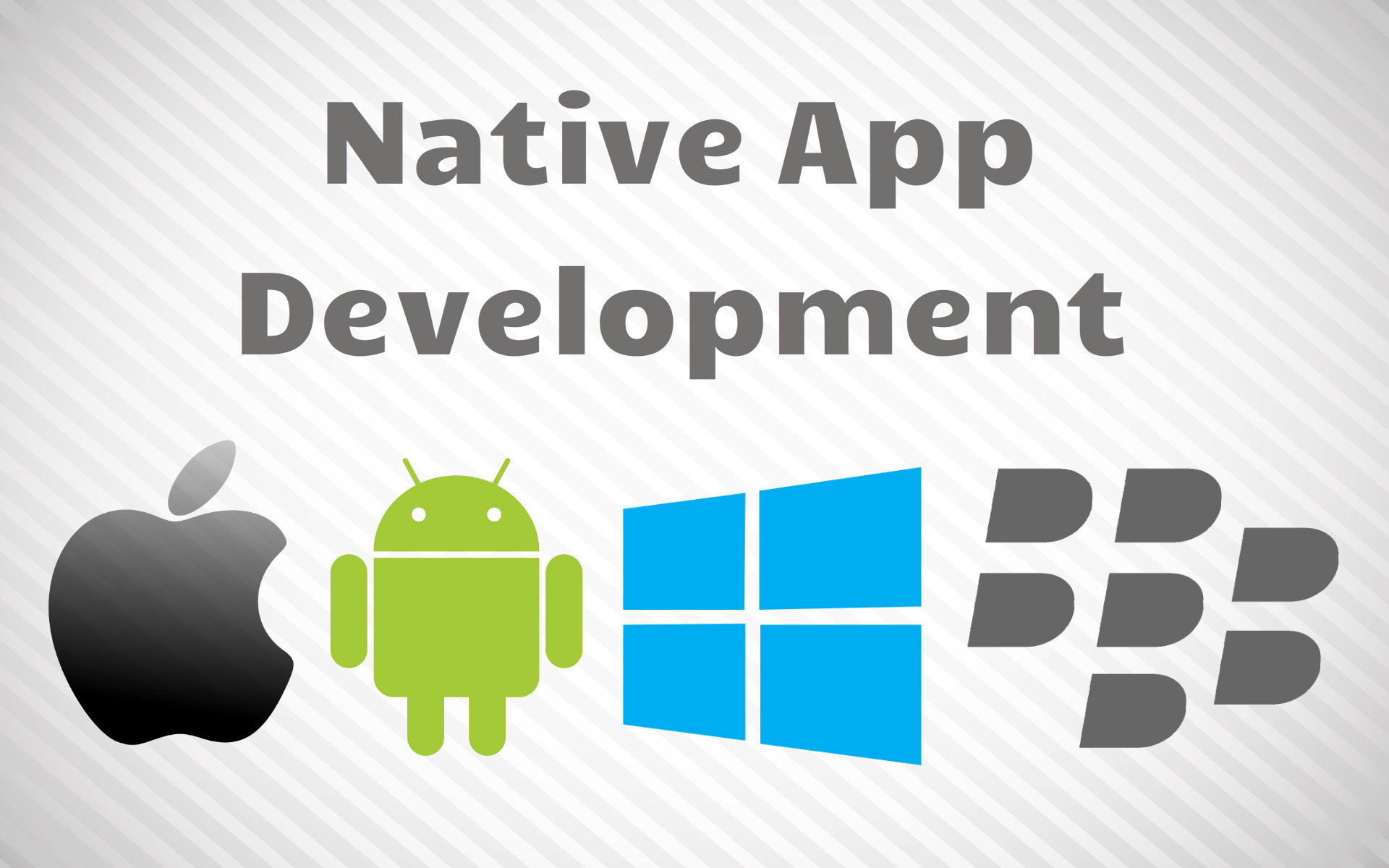As a dedicated and hardworking Mobile Developer, one is only occupied with three main things in mind.
What are they you may ask – and here’s the answer:
- Creation of a robust mobile app.
- Getting a hit of million downloads on the designed app.
- Continuing this trend and tradition of following the practice of developing killer mobile apps in a dedicated manner.
I am sure most of the heads must be nodding to reveal a YES on their end! And why not?
With the trend of getting your business listed into the easy reach of consumers, it is a must to opt for Mobile App Development. This industry is really growing at an unbelievable pace. Despite the leaps and bounds of this industry, it is mistaken to be blocked with some misleading myths. Although, it will be correct to state that the path of developing mobile apps is quite misleading and tricky.
Jump to Section
What Do App Developers Need?
Application designers need a solid, feasible, long-term mobile technique that will keep them relevant in the mobile commerce market. So, they must build up a system that will bolster productive application building. This should occur while at the same time making room in the process to facilitate awesome client encounters. These are the properties that drive mobile magnificence.
Many organizations comprehend this, yet still, they lose all sense of direction in the ocean of myths that encompass mobile application development.
Keeping in mind the end goal to transcend the myths, it’s imperative for developers to reveal the certainties that will encourage mobile application development. They also need to remove the many misdirecting convictions that prevent organizations from taking their applications to a whole new level.
Mobile App Development Myths
Cathal McGloin, a CEO of the mobile development platform FeedHenry, said “Mobile, and, by extension, mobile development, has become a necessity for many organizations.” He also added, “But companies continue to think in single apps rather than a long-term, comprehensive mobile strategy. One of the smartest, [most] efficient decisions businesses can make is to recognize the potential for additional mobile projects up front.”
All organizations who are planning to make a long-term mobile methodology need to characterize frameworks and architectures that adequately bolster application development.
However, there are a few myths about mobile app development that should be exposed.
It is a result of such myths that a few clients not mindful of a couple of aspects end up bearing lost benefit misfortune. This is due to not having the capacity to completely misuse the open doors offered by mobile app development.
Myth 1 – A Huge Amount Is Needed To Create Mobile Apps
The Truth:
The sum to be spent on mobile app development truly relies on the usefulness, functionality, building many-sided quality, and the kind of smartphone application you may need for your business or brand. For instance, basic table applications have no intricate design and are economical in this manner. Hence, it can be stated that the overall cost of developing an app completely depends on your idea.
Myth 2: App Development Is A Long And Tricky Process
Truth:
As you are most likely are aware of the fact that techniques and traditional methods of software development are generally time-consuming, hence it becomes quite obvious that it approximately takes six months to launch a new app to the Mobile app store.
You can, however, multiply this figure by the number of apps required for a business, An application procedure turns into a non-starter even before it is formulated. However, numerous new and inventive strategies like quick application improvement and highlight driven advancement have empowered vigorous application advancement and arrangement, expelling the regular myth of a long time taking app development process.
Feature-Driven Development
Feature-driven development is an iterative strategy for application advancement. It is primarily expected to deal with a task in light of object-oriented innovation. This is an exceptionally functional technique that deals with changing complexities.
Rapid app development is likewise known for conveying quick outcomes and it is, for the most part, meant to give a development process with the help of development approaches. Without any second thoughts, this strategy can expand the adequacy of the whole mobile app development process. You can even use off-the-rack devices like QuickBase, bubble.is, Appery.io, Kinvey, and so forth that require no coding.
Myth 3: In-House Mobile App Development Is Safe Option To Go For
Another common mobile app development myth is that developing the app in-house is the safest option to go for.
The Truth:
It is extremely sensitive to secure the mobile application development process. Be that as it may, in-house mobile application development isn’t the ONLY approach to do that.
Truth be told, in-house mobile application development demands a handsome capital investment of time and cash. On the other hand, the outsourcing model offers clients or customers to opt-in for a Non-Disclosure Agreement (NDA) with the specialist co-op. This enables them to secure any sort of classified and proprietary information or any other secrets related to your trade.
Myth 4: Mobile Apps Do Not Have The Rights To Access Data In Legacy Systems
The Truth:
Numerous endeavor associations have intensely put resources into resource planning software (ERP software) and often prefer taking a back step in the development of mobile apps because they don’t consistently connect to present technologies.
In spite of the fact that enterprise applications may be able to connect to the backend systems and API systems including SAP, Sharepoint, MySQL, and Oracle, many ERP’s are not mobile accessible. This can slow the application development process, making some applications outdated.
In any case, a significant number of these difficulties can be tackled by finding a mobile backend (MBaaS) as an administrative arrangement or solution with an API infrastructure that effortlessly enables cell phones to get access to legacy systems.
Myth 5: Native App Development Must Be Taken As Priority For A Better Experience
The Truth:
Mobile applications arrive in a couple of flavors: Native, mobile web (HTML5 application), and hybrid apps. However, each sort has its points of interest and inconveniences at the same time.
The issues emerge when you pick one type without thinking about your needs and your target audience.
For example, many accept that a native mobile application conveys the best mobile experience. Now and again, that is valid. In different cases, the native approach for mobile app development may, however, prove as the worst choice.
As opposed to simply go the native application development, think about your target audience. Think about when and for what reason do they utilize the application. What are they attempting to achieve with the use of your designed app?
At exactly that point, you will know which development process to chose from the variety.
Myth 6: Mobile App Development Only Includes Coding
The Truth:
Many individuals believe that building up a fruitful mobile application is just about “coding”, yet it requires more than that.
It is a fundamental necessity to know about iOS and Android development, however completely planning an application starting with underlying thought, graphics, covering functionality design, and user experience requires high capability and experience.
It is fundamental to know about the most recent innovation, trends, and to adjust to new techniques and hardware. Each and every use case varies, bringing about the requirement for various development languages, toolkits and network connectivity solutions for different backend systems and data sources.
Support for Multiple OS Is also Important
In the mobile space, support for numerous OS forms is also critical. Be that as it may, Cloud-based mobile application platforms have made designer’s life a great deal simpler.
Normal development of any task or project contains around 20 different stakeholders including developers, project managers, business supervisors, in-house IT agents, top administration representatives, and others.
To expedite stakeholders on a similar page and to guarantee that the entire development process happens perfectly, a high level of co-operation and collaboration is expected. Mobility isn’t just about creating applications, it requires a more extensive mobile methodology and concentrated push to offer bleeding edge mobility solutions.
Myth 7: Your Job Ends With The App’s Release
The Truth:
In case you are thinking along the lines that there is nothing beyond turning your idea into a mobile app, then let me acknowledge you with the fact that you are highly mistaken. I understand that building a mobile app is a tough process, but this hard effort requires proper maintenance.
Teams usually concentrate exclusively on development costs and disregard the Total Cost of Ownership. They disregard the upgrades, maintenance, changes, and other things they should do once the app is developed.
However, the dismal truth is that in the long run, the maintenance system requires more time and money than the development itself. Once you are done with the development of your mobile app, it becomes your duty to take care of it in the next phase of post app development requirements.
Providing required updates to the app is highly required to make your users stick to the use of your app.
Myth 8: Apps Having Higher Graphic Rate Gets High User Ratings
The Truth:
High-quality graphics are vital for the creation of mobile applications. However, that doesn’t ensure an application will be fruitful and a huge number of clients will download it.
There are lots of different things that add to an application’s prosperity and bring most elevated client rating. Such things include User experience, functionality, and simplicity. You ought to likewise ensure that your application characterizes its purpose obviously. Otherwise, your clients might be befuddled and may uninstall it.
User Interface
Mobile UI configuration needs are not quite the same as the requirements for desktop PCs. The little screen size and touch screen controls create extraordinary contemplations in UI configuration to ensure ease of use, consistency, and readability.
User Experience
It is a standout amongst other procedures for enhancing consumer loyalty and reliability by boosting the ease of use and usability.
Ease to Use Navigation
It does not matter whether you are planning an e-commerce mobile application or some other sort of application, clients are enamored with applications that have simple navigation. They lean toward those applications that are anything but difficult-to-use with no unpredictable navigation and design.
Thus, along with the use of graphics in your mobile apps, UX and UI play an equivalent and important role towards encouraging the success of your designed app.
Myth 9: Developing iOS Apps Is Enough
The Truth:
On the off chance that you are creating native applications, you may have this doubt in your brain: Which platform to decide on?
You must be aware of the fact that native apps generally do not work on all platforms. You will be required to build a separate app for every single platform. Along these lines, what you incline towards – producing for each platform or you simply concentrating on the iOS platform – is the key.
Let’s apply a thought over the point that if you are developing a consumer product for an individual, you may be ideal by focusing on iOS stage as users install and utilize them all the more dependable. Be that as it may, if offering a business application that will be installed in numbers, one should concentrate on the Android platform too.
Myth 10: Marketing Deals In Spending A Lot Of Money
The Truth:
Indeed, without a doubt, paying for marketing is a straightforward course to take. However, it’s not really the best one. Development and achievement originate from developing a top of the line and feature-rich application and savoring your first set of users.
Today, all the effective applications grow by listening in on others’ conversations or suggestions. Individuals are enamored with every one of those items or applications that emerge from rest. Paid marketing may just get you download numbers, but no client maintenance, so guarantee that you advertise your application appropriately.
What Else Can Be Done Instead of Paid Marketing?
Aside from paid marketing, you can run free mobile application marketing like Facebook organic posting, advanced tweets, encouraging positive surveys and evaluations, email promotions, enhancing your application for application stores (ASO), and so on are a portion of the versatile application advertising tips that you can consider.
The banish for emerging from different applications is very high that is the reason it is essential for mobile application developers and business people to have a correct mobile application marketing procedure to advertise their application.
Wrapping Things Up
So, these were the common myths that might have been building up in your mind. In case, you are now trying to build up your own mobile app, do not fall into the trap of these build-up myths, rather understand the truth and apply it further!
- LinkedIn Scraper | LinkedIn Data Extractor Software Tool - February 22, 2021
- Is Web Scraping Legal? - February 15, 2021
- What Is Data Scraping? - February 10, 2021











